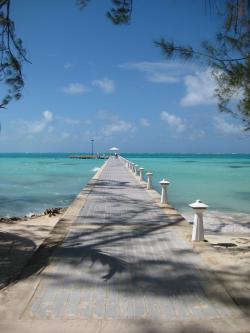jks
About
- Username
- jks
- Joined
- Visits
- 36,245
- Last Active
- Roles
- Member, Administrator, Moderator
- Points
- 639
Reactions
-
Two Public Kiwis on Port 8073? [fixed in v1.294]
So we got this working with the two Kiwis on ports 8073 and 8074 respectively, behind the 4G router and the proxy enabled for both.
Also, the Kiwi network scanner (kiwisdr.com/scan) has been updated to version 1.5 and allows you to specify the port number instead of always using the 8073 default. Handy in the case of a Kiwi with port number other than 8073 with a local ip set by DHCP, and the ip has moved and you don't know what the new one is. -
v1.290/291/292 software updates
v1.292 June 16, 2019 Masked frequencies will not be applied when a valid time limit exemption password is given in the URL, e.g. mykiwi.com:8073/? ... &pwd=the_password (or &password=the_password) Connections from the local network (normally privileged) still see the effect of the masked frequencies. This is so admins can setup and test masked labels from the main UI. The time limit exemption password is set on the control tab of the admin page. This is separate, and not to be confused with, the user password on the admin security tab which controls access to the sdr channels. Fixed a bunch of masked frequency related bugs including a problem when running in 20 kHz mode. If a Kiwi has time limits or masked frequencies configured an icon will be included in the status line appearing on sdr.hu and kiwisdr.com/public (i.e. alongside the existing icons indicating 20 kHz mode, GPS enabled and the antenna switch extension available). An hour-glass icon if inactivity or 24 hour time limits are configured. A red, circle-slash "no entry" icon if masked frequencies are configured. Keep GPS az/el background image from flashing with latest versions of Firefox and Safari. Update TDoA help button panel to indicate current mode setting is ignored (IQ data is always used). Ran clang static analyzer over entire source code base. Found a few bugs. Also ran the clang address sanitizer for a while and fixed a few memory leaks. -
v1.290/291/292 software updates
v1.292 June 16, 2019 Masked frequencies will not be applied when a valid time limit exemption password is given in the URL, e.g. mykiwi.com:8073/? ... &pwd=the_password (or &password=the_password) Connections from the local network (normally privileged) still see the effect of the masked frequencies. This is so admins can setup and test masked labels from the main UI. The time limit exemption password is set on the control tab of the admin page. This is separate, and not to be confused with, the user password on the admin security tab which controls access to the sdr channels. Fixed a bunch of masked frequency related bugs including a problem when running in 20 kHz mode. If a Kiwi has time limits or masked frequencies configured an icon will be included in the status line appearing on sdr.hu and kiwisdr.com/public (i.e. alongside the existing icons indicating 20 kHz mode, GPS enabled and the antenna switch extension available). An hour-glass icon if inactivity or 24 hour time limits are configured. A red, circle-slash "no entry" icon if masked frequencies are configured. Keep GPS az/el background image from flashing with latest versions of Firefox and Safari. Update TDoA help button panel to indicate current mode setting is ignored (IQ data is always used). Ran clang static analyzer over entire source code base. Found a few bugs. Also ran the clang address sanitizer for a while and fixed a few memory leaks. -
Aluminum Enclosure Fan
Just about any 30x30mm brushless 3.3-5V fan will do. Try to get one with ball instead of sleeve bearings. Running a 5V fan on the 3.3V from the Kiwi Grove connector is fine and will reduce the fan noise (I believe the enclosure ships with a 5V fan).
When the time comes the biggest problem will be putting the Grove connector on the new fan leads. The pins should be removable from the white body of the Grove connector. Or you could cut-and-splice the wiring. I prototyped with some fans from Mouser I think. -
v1.290/291/292 software updates
-
v1.290/291/292 software updates
From the CHANGE_LOG file:v1.290 June 12, 2019 UI changes for devices with small screens: (phones or tablets) Clicking control panel navbar "Off" icon repeatedly will toggle the top bar visibilities. Similar to how 'y' shortcut key functions with desktop browsers. For narrow phone-width screens the control panel is scaled to fit the screen width if the phone is being held in "portrait" orientation when connecting to the Kiwi. Support for "masked" frequencies where the audio is muted and the waterfall blanked. Designed to help deter users who camp on particular frequencies for long periods of time. As admin create DX label(s) with a type value of "masked". When any part of the current passband crosses into the masked area the audio is muted. The mode of the label determines the width of the masked/blanked area (as seen on the waterfall). Custom label passbands apply so you can precisely control which frequencies are masked. S-meter extension now has selectable averaging. Previously, when the measurement speed speed was low, the multiple S-meter samples were plotted along the same x-axis position. Also, the speed slider now selects an inverse power of two samples (was linear). The maximum measurement interval (1/4096) is now roughly 1.5 minutes. Support for cloning Kiwi configuration files from another running Kiwi. See new user interface on the admin config tab. This is intended for owners of multiple Kiwis (yes they exist!) that want an easy way to replicate an existing configuration before further customization. All of the relevant files in /root/kiwi.config are cloned including kiwi.json, admin.json, dx.json and config.js (band definitions). Option to clone only the dx.json file. Better trackpad/mouse-wheel waterfall zoom behavior. Previously the trackpad response was too sensitive causing the zoom to go full max/min instantly for a small trackpad movement even though a mouse wheel worked reasonably. Proxy support for variable port number. Previously only one Kiwi could be proxied per public ip address. Now multiple Kiwis with different local port numbers can use the proxy service behind a router with a single public ip/global-port. The Kiwis are differentiated by their host names on the proxy. E.g. mykiwi1.proxy.kiwisdr.com:8073/ and mykiwi2.proxy.kiwisdr.com:8073/ (note both port 8073) where mykiwi1 could be on local network port 8073 and mykiwi2 on local port 8074. -
v1.290/291/292 software updates
-
Frequency Blacklist [fixed in v1.290]
-
Frequency Blacklist [fixed in v1.290]
-
v1.290/291/292 software updates
From the CHANGE_LOG file:v1.290 June 12, 2019 UI changes for devices with small screens: (phones or tablets) Clicking control panel navbar "Off" icon repeatedly will toggle the top bar visibilities. Similar to how 'y' shortcut key functions with desktop browsers. For narrow phone-width screens the control panel is scaled to fit the screen width if the phone is being held in "portrait" orientation when connecting to the Kiwi. Support for "masked" frequencies where the audio is muted and the waterfall blanked. Designed to help deter users who camp on particular frequencies for long periods of time. As admin create DX label(s) with a type value of "masked". When any part of the current passband crosses into the masked area the audio is muted. The mode of the label determines the width of the masked/blanked area (as seen on the waterfall). Custom label passbands apply so you can precisely control which frequencies are masked. S-meter extension now has selectable averaging. Previously, when the measurement speed speed was low, the multiple S-meter samples were plotted along the same x-axis position. Also, the speed slider now selects an inverse power of two samples (was linear). The maximum measurement interval (1/4096) is now roughly 1.5 minutes. Support for cloning Kiwi configuration files from another running Kiwi. See new user interface on the admin config tab. This is intended for owners of multiple Kiwis (yes they exist!) that want an easy way to replicate an existing configuration before further customization. All of the relevant files in /root/kiwi.config are cloned including kiwi.json, admin.json, dx.json and config.js (band definitions). Option to clone only the dx.json file. Better trackpad/mouse-wheel waterfall zoom behavior. Previously the trackpad response was too sensitive causing the zoom to go full max/min instantly for a small trackpad movement even though a mouse wheel worked reasonably. Proxy support for variable port number. Previously only one Kiwi could be proxied per public ip address. Now multiple Kiwis with different local port numbers can use the proxy service behind a router with a single public ip/global-port. The Kiwis are differentiated by their host names on the proxy. E.g. mykiwi1.proxy.kiwisdr.com:8073/ and mykiwi2.proxy.kiwisdr.com:8073/ (note both port 8073) where mykiwi1 could be on local network port 8073 and mykiwi2 on local port 8074.








